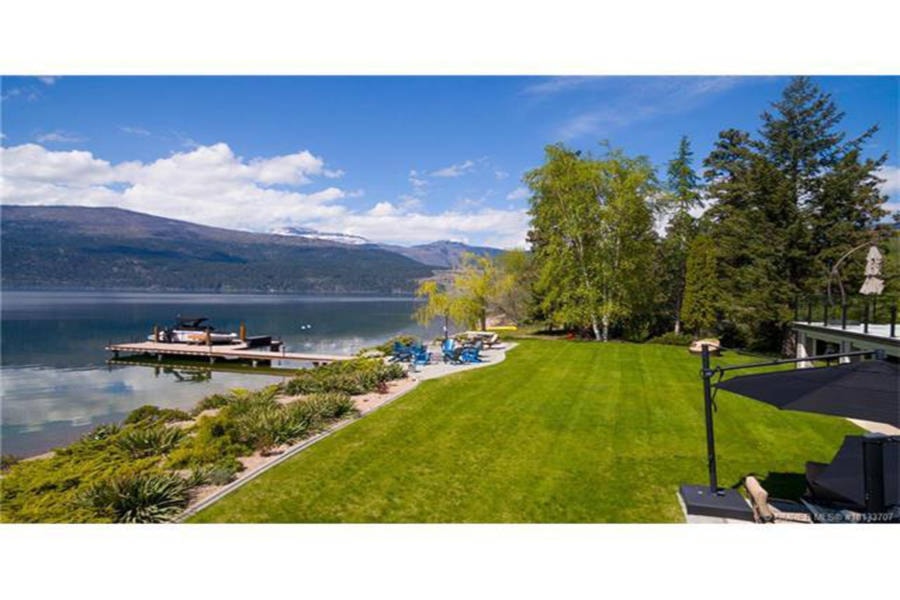Property owners along Okanagan Lake are about to get a tutorial on how to preserve the natural state of the shoreline.
The program will involve meeting with all Okanagan Lake shoreline property owners to teach what shoreline infrastructure additions require a permit and how to enhance a property without the loss of the lakeshore’s natural landscape.
This initiative will cost $124,000. The funding for that is from three sources: $20,000 from the Regional District of Central Okanagan, $20,000 from the Okanagan Basin Water Board and $84,000 from Environment Canada.
For affected residents, their initial exposure to this initiative will be to recieve by mail an information brochure primer on lakeshore development, who to contact if they have questions and what regulations protecting shorelines are currently in place.
There will be a team of up to 12 people from various government jurisdictions and private environment groups, including the Okanagan Collaborative Conservation Program, involved with followup meetings with property owners starting in the fall until March 2019.
“This project focus is on talking to the lakeshore landowners, providing resource materials and talking about the importance of foreshore protection and the best practices on how to maintain the natural state of our shoreline over a long period of time in a cost effective way,” said Scott Boswell, program manager for OCCP.
He said building large retaining walls on the shoreline is both very expensive and destructive to the natural landscape.
“There are better ways to enhance your part of the shoreline that protect the natural vegetation and are not as expensive.”
This study follows up on the completion of the 2016 Okanagan Lake Foreshore Inventory and Mapping study update, carried out by Ecoscape Environmental Consultants Ltd. (see sidebar).
Jason Schleppe, senior biologist and principal of Escoscape, said individual property owners don’t by themselves speed up the rate of decline of Okanagan Lake’s natural shoreline.
But, he said, when you combine all the landowners who together are having a negative impact by building retaining walls and large docks, then the impact starts to register.
“It’s about the cumulative effect. If everyone takes down one tree, the impact starts to add up, ” Schleppe said.
“If our goal is to try and slow down the rate of loss of natural shoreline, we need to raise the awareness of how that can be avoided.
“If you take down all the natural vegetation, then you start to see land erode when flooding events occur like what happened in May. The root mass of existing vegetation does a good job of holding land in place.
“You will see with natural lakes that haven’t seen their shorelines urbanized, the shorelines are very stable. When you urbanize, the shoreline is destabilized.”
He cited as an example of how property owners seeking a view don’t have to cut down a bunch of trees, but maybe frame the view around the existing trees and maybe plant some more as well.
Schleppe said Environment Canada has a policy objective interest in seeing the Okanagan Lake corridor preserved in its natural state, while the province has invested thousands of dollars in reviving the Kokanee fishery in the lake which is reliant on the natural shoreline ecosystem of vegetation and their food source insects it supports to survive.
Schleppe said Shuswap Lake carried out an education program with lakefront landowners as part of developing an integrated management plan, but nothing as detailed as what will be carried out for Okanagan Lake has been done before.
“I would say this is an exciting opportunity,” said Boswell. “Our chance to inform the general public often comes in reports to municipal councils and working with other government staff, but here we will be able to talk with people who are directly affected by (shoreline) regulations.
“We will be able to help people individually understand what the rules are and why they may be changing.”
Schleppe said flooding directly correlated to the increasing absence of natural shoreline vegetation is one that is hard to quantify.
“That’s a tough question because there were a lot of moving parts, a lot of factors that went into what happened,” he said.
“I don’t think you can point the finger of blame at one thing. Climate change had a role. That cumulative effect of loss of natural shoreline vegetation had a role. Managing the lake levels had a role. Not having a lot of snow and then suddenly getting a lot of snow in late spring played a part.
“There are a lot of bouncing balls going on there and every decision that is made in turn has consequences. Everything has a cause and effect in that situation. It’s hard to try and keep all those balls up in the air.”
Boswell said climate change is not a point of debate within Environment Canada, and that flood and drought conditions in the Okanagan Valley will be a fact of life moving forword.
“The impacts of climate change are not something that are behind us. We are living it now and we need to start planning for how we are going to deal with that going forward.”
